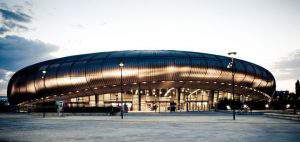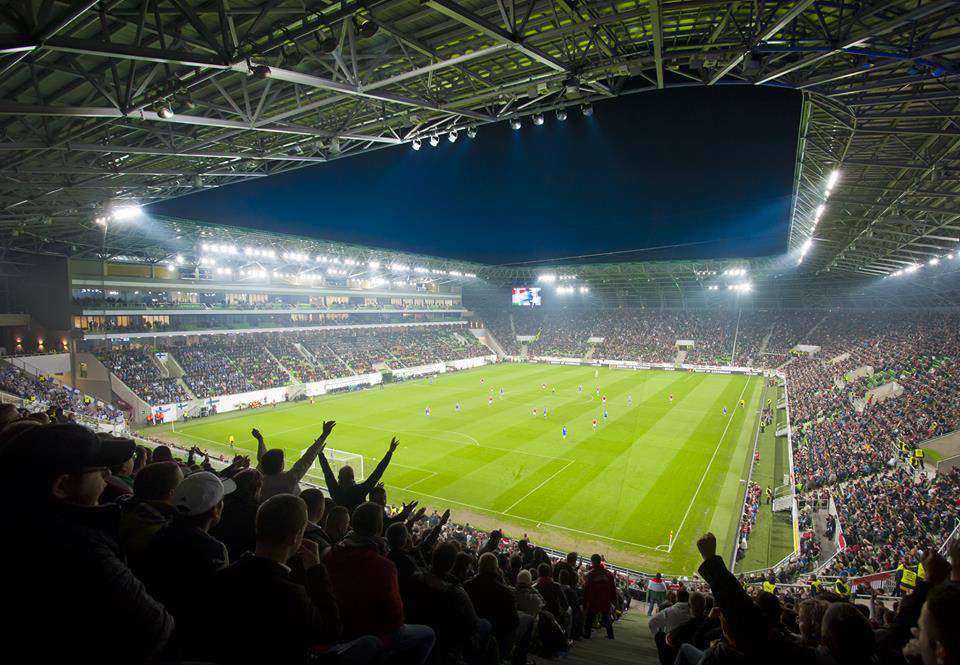5 iconic sport venues in Budapest
Thanks to the excellent Hungarian athletes and coaches, our country has achieved illustrious results in the world of sport. Hopefully, Hungarian sportspeople will continue to succeed on an international level in the future as well. We’d like to present five iconic venues, which are must-see sights for sport lover tourists when in Budapest.
The tomb of Ferenc Puskás
Ferenc Puskás is one of the world’s greatest football players, and his name always comes up when you ask foreigners about Hungary. Puskás Öcsi, or, as he is called in Spain, Pancho, won an Olympic Games, a silver medal at the World Championships with the famous Golden Team, set several records as the player of Real Madrid, and also won a Champions League title.

Photo: Wiki Commons By Dr Varga József
He was born in 1927, he emigrated from the country in 1956 due to communism but he returned later and died in Budapest on the 17th of November, 2006. On the 9th of December, he was buried in the Saint Stephen’s Basilica in the frameworks of a great national ceremony. If you want to honour the memory of the greatest Hungarian athlete, visit his tomb in the Basilica.
Groupama Arena
The stadium, which was inaugurated in the August of 2014, is currently the biggest sport facility (22 thousand seats) in Hungary. It is the home field of the historic team of Ferencváros and the national football team.

Photo: Wiki Commons By Marcell Katona
It will keep its “biggest stadium” status until 2019, because the new Puskás Ferenc Stadium, which will be able to fit three times as much people, is expected to be finished by then. You can learn about the past and present of FTC and the stadium on guided tours: http://www.groupamaarena.com/stadiontura/
Papp László Budapest Sports Arena
It is the biggest indoor facility in the country, which is quite multifunctional, meaning that it is the home of diverse sport events and many concerts. The establishment, which can fit 12,500 people, was built for two years and was inaugurated in 2003.

Photo: www.facebook.com/BudapestArena
The latest sport event held there was the World Judo Championships, but world-famous performers like Black Sabbath, Bryan Adams, Kylie Minogue, Cher, Shakira etc. also put on amazing shows in the arena.
Hajós Alfréd National Swimming Complex
The pool inaugurated in 1930 is frequently referred to as the “Mecca of water polo”. It was recently renovated for the FINA World Championships, so its indoor and outdoor pools are in excellent condition. The complex was designed by Olympic and World Champion swimmer, Alfréd Hajós and it still remains the citadel of swimming and water polo.

Photo: www.fina-budapest2017.com
Besides the FINA World Championships, the venue was also the home of two European Swimming Championships and two World Water Polo Championships in the past 20 years. The pools are also open to the public, so if you’re interested in swimming in the most famous Hungarian swimming pool, give it a go.
The running track of Margaret Island
Once you’re on the Margaret Island, we have a good tip for the lovers of running as well. The running track on the island has a special atmosphere as it was built quite close to the shore, therefore you can almost feel the waves of the Danube on your skin when running.

Photo: www.futas.net
The track is 5,285 metres long and is covered with a rubber-coated surface to protect the joints. It’s a curiosity that running eight circles equals running a marathon. It is a very popular spot which attracts thousands of people every day. Many people go there from faraway parts of the city just to enjoy the beautiful environment while exercising.
Featured image: www.facebook.com/GroupamaAréna
Source: Daily News Hungary
please make a donation here
Hot news
Top Hungary news: Speed limits lowered, plant grown in lunar soil, motorway expansion, All Saints’ Day — 31 October, 2024
Hungary reaffirms Belarus partnership, advocates peace in Ukraine at Minsk meeting
Renting in Hungary: These are the most important things you should know as a foreigner
Orbán and Austria’s Kickl sign Vienna declaration for ‘patriotic’ European reform
VIDEO: Hungarian cinematographer behind Lady Gaga’s newest music video
National economy minister: Hungary’s growth hindered by external factors, especially automotive decline




